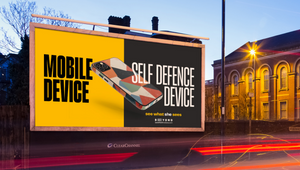
What Maximalism in Fashion and Football Tell Us about Authenticity

Anyone notice how Maximalism staged a revolt during last week’s Paris Fashion Week, kicking quiet luxury to the kerb? I mean, look at this fantastic Marni ensemble from the SS24 catwalk with its maximal sports jacket-on-acid vibe. It’s just so over-the-top joyous.
Seeing this and others like it from PFW set my '90s nostalgia' alarm bell ringing (in a good way).
Think back to that decade - what jumps out for you as a hallmark of that era? The politics? The fashion? The great sporting moments?
For me, it’s a mixture of the latter two - a glorious meeting of design aesthetic and sporting nostalgia, one that was completely embodied in 1990’s football shirts. As a designer, as well as a football obsessive, for me this was an era of peak maximalist artistic expression, one that we hadn’t seen before: patterns, colours and detail came together in symphony to tell amazing stories both on and off the pitch.
Looking back through modern (albeit rose-tinted) lenses has guided my current design practice to embody this philosophy as much as I can. I always ask myself at the start of a brief, “How can I cram as much story into this as possible?” Maybe this was just a way to rebel against the dominant ‘corporate’ and ‘clean design’ language that plagued the formative part of my professional career.
The movement of maximalism is just that – the rejection of the notion that design shouldn’t have to be just function over form. We maximalists ask, “Why can’t we have both?” Less is not more if it doesn’t convey your message wholly.
As designers, it’s important to care deeply about the things we are creating. Actions speak loudly, and creating a design language that has structure as well as a compelling story is what we designers do - but it’s also something that’s increasingly important in an era when people care more than ever before about a brand’s story, ethics, its practices and how it shows up in the world. In this sense, the right design can create a two-way relationship that demonstrates that as a brand looking to be respected and valued, you also understand and respect your audience’s values.
Design, however, is just one side of the multi-faceted brand challenge. Can we look to embed this philosophy into the cracks of other aspects of the brand story? I think so. Creating a full and rich story requires all the parts of your brand to be working in unison, and we can achieve this through marrying design to how we talk about not only the product, but also the world. Beauty and flaws, and how those relate back to our point of view. Every brand does this, it’s not revolutionary. What will differentiate your brand from others is subscribing to this maximal effort philosophy to go deeper – brand stories that are designed to specifically resonate with your target demographic through detail-oriented authenticity.
And this is exactly what makes Nike so engaging for its consumers. A perfect example of maximal effort is their ‘LDNR’ campaign (or ‘Londoner’). Every frame, every piece of dialogue, every sound effect and cameo is filled with nuance that captures the true spirit of London, as only a Londoner would know it. The consumer can see authentic stories being told in places that they know by people who represent them, and these small details stack up when combined with Nike’s messaging and design in order to build a bigger, more well-rounded picture. In stark contrast, competitor Adidas’ TfL (Transport for London) collaboration saw the German sportswear giants attempt a similar cultural campaign, except they crucially skimped on the details that could have made the TfL collaboration a fulfilling experience for the viewers. No stories were told, no nuance, no authentic specificity. Instead, they settled on shoes with a colourway for each line. A real shame given the opportunity.
Maximalism isn’t needless granularity. It’s not an overloading informational headache. Instead, it’s using detail to the fullest, filling space with compelling and authentic stories while still not gorging on stats. Some might call it a “more is more” philosophy, but I just see maximalism as additive - add until the story feels full, then pause.
Using our previous example of LDNR, Londoners don’t need to know the exact postcodes, or street names in the campaign. What we can focus on is how cultural moments are framed authentically, creating an overarching narrative for them to latch on to. There’s a key difference between showing models riding a random tube line (Adidas), versus someone looking cool while perched on the ubiquitous Boris Bike (Nike). The Nike campaign grounds our values in reality, and relatability, and are therefore more likely to be believed and bought into – internally, and externally. That is just one example of maximal effort in action. It can, of course, be used across tone of voice, S&R, product and, surprise surprise, design.

(Image: Classic Football Shirts)
I started this by reflecting on the design of football shirts in the 90s, and that is also where I’ll end. Drake Ramberg, the iconic '90s Nike designer said of the Italy 1995 home shirt, “I had to immerse myself in the history and culture of a team, and the entire country to create the perfect jersey.” The details on this shirt are obviously stunning and draw heavily on Italian culture: Jacquard patterning in the style of those rustic pavements seen country-wide, a revisited republican serigraphy logo, and nods to their previous World Cup glories. All this works to achieve the goal of “making the players proud to wear that shirt”. Yes, you could just create a blue shirt for Italy, or you could create a blue shirt that also represents the players’ deep cultural ties.
The maximalist lesson for us all? Every time there is an option to tell a typical brand story, choose instead an authentic, relatable one, brimming with if-you-know-you-know detail. Ultimately, these stories are the ones that will resonate with your audience and endure for years to come.















